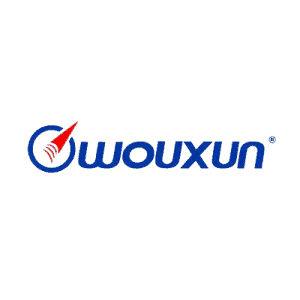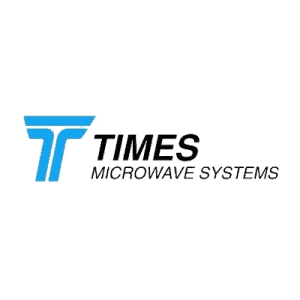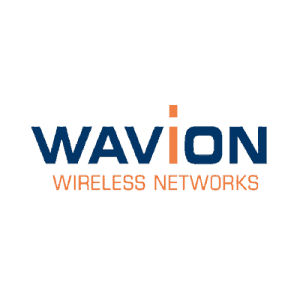Leading Manufacturers

Ubiquiti Networks entered the wireless technology market in June 2005, after announcing its “Super Range” mini-PCI radio card series. The SR2 and SR5 cards were adopted by original equipment manufacturers and wireless Internet service providers. Customers included Wireless Router Application Platform (WRAP), Soekris, and Mikrotik. Operating at the 2.4 and 5.8 GHz bands, the “Super Range” modules used the Atheros integrated circuits.
In 2006, Ubiquiti announced Freedom Frequency, which used frequencies as high as 60 Gigahertz (GHz) on its radio modules. This encouraged the release of the SR9, a separate card operating at 900 MHz non-standard IEEE 802.11 band.
Ubiquiti introduced the PowerStation in May 2007, its first product to feature an integrated radio/antenna design, In the same year, Ubiquiti released more XR cards for the licensed bands to deal with congestion seen in the 2.4 GHz and 5.8 GHz bands. The company received attention in August 2007 when a group of Italian amateur radio operators set a distance world record for point-to-point links in the 5.8 GHz spectrum. Using two XR5 cards and a pair of 35 dBi dish antennas, the Italian team was able to establish a 304 km (about 188 mi) link at data rates between 4-5 Mbit/s.
In 2008, Ubiquiti announced additions to its 802.11 b/g lineup, including the Bullet, NanoStation, NanoStation Loco, PicoStation and RouterStation. The following year gave rise to airMAX, Ubiquiti’s proprietary MIMO (multiple-input and multiple-output) Time division multiple access (TDMA) polling technology. The new protocol presented an entire lineup of radio/antenna systems, building on the 802.11 b/g series, including the Rocket M. Shortly before the end of 2009, Ubiquiti announced the NanoBridge M and AirGrid M.
In 2011, Ubiquiti released new antennas for its M series devices as well as new models for the NanoBridge series. In August, outdoor and mini UniFi APs were announced, as well as AirCam/AirVision, an IP camera/NVR software. For a second consecutive year, Ubiquiti received the WISPA Manufacturer of the Year award. During October, Ubiquiti announced: Rocket/Bullet Titanium, a Rocket M5 with Gigabit Ethernet ports, TOUGHSwitch, a POE switch, EdgeMAX powered by EdgeOS, a routing platform based on Vyatta, UniFi and AirCam Pro series, as well as AirControl, management-software for Ubiquiti equipment.

MikroTik is a Latvian company located in Riga was founded in 1996 to develop routers and wireless ISP systems, MikroTik provides wireless ISP systems for Internet connectivity in most of the countries around the world.MikroTik experience in using industry standard PC hardware and complete routing systems allowed us in 1997 to create the RouterOS software system that provides extensive stability, controls, and flexibility for all kinds of data interfaces and routing, this software based on Linux.
In 2002 MikroTik decided to make our own hardware, and the RouterBOARD brand was born. MikroTik have resellers in most parts of the world, and customers in probably every country on the planet.
MikroTik RouterOS software is divided to levels ,as a part of software option and price.
Actually main Levels are Level3 to Level6 (except demo and trail ver.),
Level 6 is the highest level ,so all options are enable and unlimited.
Every MikroTik model has level number ,products with lower level is suffer from limited option or options that is in disabled mode.
for example , if we take level 3 , we see that items with level 3 cant operate as Wireless Access point, and the numbers of session is limited to 10 sessions, while on Level 6 all option is unlimited.
All MikroTik items arrive with level number according to product model, That means We don’t need to pay for RouterOS when we purchase MikroTik products.
Big advance of RouterOS software is that client can buy RouterOS software separately (without hardware) and install it on Regular X86 pc.
The client can chose The RouterOS Level 4 – 6 on purchase time , of course each level have different price, and level 6 is the most expensive license.
The RouterOS is a operating system, you can’t install RouterOS with other operating system.

L-com Global Connectivity, a preferred manufacturer of wired and wireless connectivity products, offers a wide range of solutions and unrivaled customer service for the electronics and data communications industries. The company’s product portfolio includes cable assemblies, connectors, adapters, computer networking components, and custom products, as well as their HyperLink® brand of wireless products which include antennas, RF amplifiers, coaxial lightning and surge protectors, and NEMA rated enclosures.
L-com’s HyperLink® wireless products are designed for WiFi, WiMAX, SCADA, 802.11a/b/g/n/ac, RFID and Bluetooth applications. L-com’s other brands include MilesTek®, specialists in Military/Aeronautics connectivity solutions and Aiconics, a leading manufacturer of electrical connector products, and Point Six™ Wireless, pioneers in the design and manufacture of wireless sensors used in IoT applications. Trusted for over 30 years, L-com, which is headquartered in North Andover, MA, is ISO 9001: 2008 certified and many of its products are UL recognized.

Quanzhou Wouxun Electronics Co. Ltd. was founded in 2000 in Quanzhou City, China for the express purpose of developing, manufacturing, and marketing the best serial wireless two-way radios and accessories possible. WOUXUN products have been very well received throughout the world for both their quality and price. We also supply product to others in the communication industry and welcome their enquiries.

Compex Systems listed company in Singapore From 1987.
Compex has been specializing in product design and manufacturing and delivering superior OEM/JDM/ ODM services in wireless communications.
Dedicated to innovative design for RF wireless modules, host boards, and antennas, Compex also provides software design, product testing and certification, as well as fully customized design and manufacturing.
Our wireless communications solution and services encompass both indoor and outdoor mesh network, hotspot, and subscriber units.
Compex strives to meet wide-ranging development demands. Having worked with Qualcomm Atheros over 10 years, we offer innovative hardware, software, and manufacturing capabilities through industry-specific design, engineering, and services tailored to the market needs.

Times Microwave Systems was founded in 1948 as the Times Wire and Cable Company. TMS pioneered closed cell low loss polyethylene foam dielectrics and low loss taped PTFE dielectric coaxial cables. Those developments established today’s high performance coaxial cable industry. Expansion of its RF and microwave connector design and manufacturing expertise then allowed TMS to take full responsibility for end-to-end performance of complete cable assemblies.
With production facilities in the US and China we address both specialized applications with extremely demanding performance requirements and high volume commercial applications at frequencies from a few KHz to 50 GHz.
In 2003, TMS was selected by Lockheed Martin Aeronautics to supply the Broadband Airborne Cable Assemblie s on the F-35 Joint Strike Fighter (JSF). TMS was chosen to supply this solution
since its high performance cable assemblies are able to handle high-speed data in extreme avionics environments including wide variations in temperature and pressure.
TMS was instrumental in the development of military specifications, including MIL-C-17 for coaxial cables and MIL-T-81490 for Transmission Lines. Times is the leading source of MIL-C-17 qualified products, holding more QPL’s (Qualified Product Listings) than any other manufacturer, and Times products meet rigorous MIL-T-81490 and MIL-C-87104 requirements

WAVION Israeli company pioneer in wireless communication for metro and rural areas, supporting End users(CPE).
Wavion develop two-way digital Beamforming with powerful Interference Immunity Suite are the first and only technology to resolve the significant performance, penetration and profitability,
Beamforming technology based on multi MIMO to reach max performance,The true spatially adaptive Beamforming technology leverages a unique High Gain Diversely Polarized (HGDP) antenna array for maximum performance. The Beamforming significantly increases the link gain and interference immunity. With 3×3 MIMO and three spatial data streams, Alvarion’s base stations set up a new market milestone delivering up to Gigabit per second capacity and 450 Mbps data speeds.
The first wavion devices are WBS-2400 Omni, and WBS-2400 with sector antenna.
This devices was the base for growing and to each new market over the word.
This devices compatible with 2.4 GHz , 5.8 GHz and license 700 MHz that enable
Working without “site of line” (NLOS).
In 2011 wavion was acquirement by alverion and introduce the WBSn devices.
Wavion WBSn is a family of advanced outdoor Wi-Fi base stations suitable for broad range of applications. Operating in the 2.4 and the 5 GHz bands, and leveraging spatially adaptive Beamforming together with 3×3:3 MIMO technology, the WBSn family delivers the best range and capacity in the market. This outstanding performance addresses the rapidly growing needs of operators to deliver new content-rich services, while maintaining quality of service and profitability.
The WBSn base stations are carrier grade IP-68 solutions, with rich set of security, QoS and management tools, and with a built-in Access Controller, thus reducing cost and increasing availability. The WBSn family is environmentally-friendly with low power consumption, ideal for off-grid powering, and with green standards compliance.
The WBSn family includes ten base stations in four basic form factors, all IP-68, designed for harsh outdoor environments, with easy pole and wall installations.

